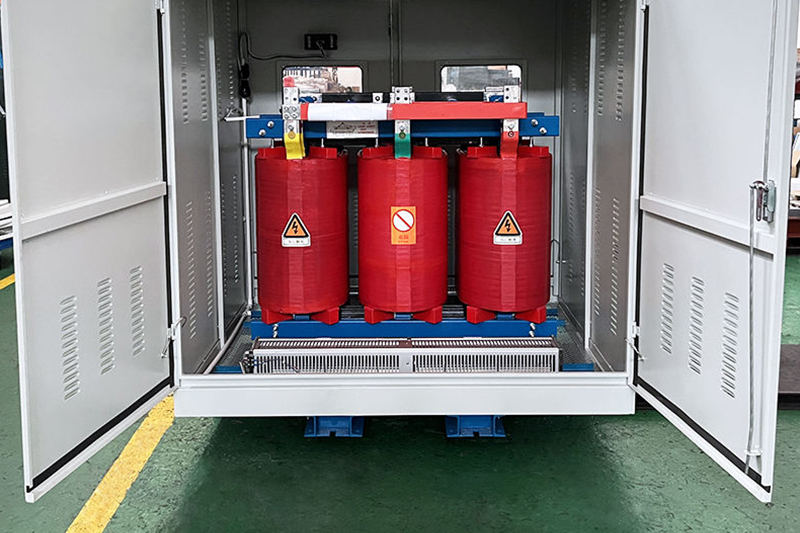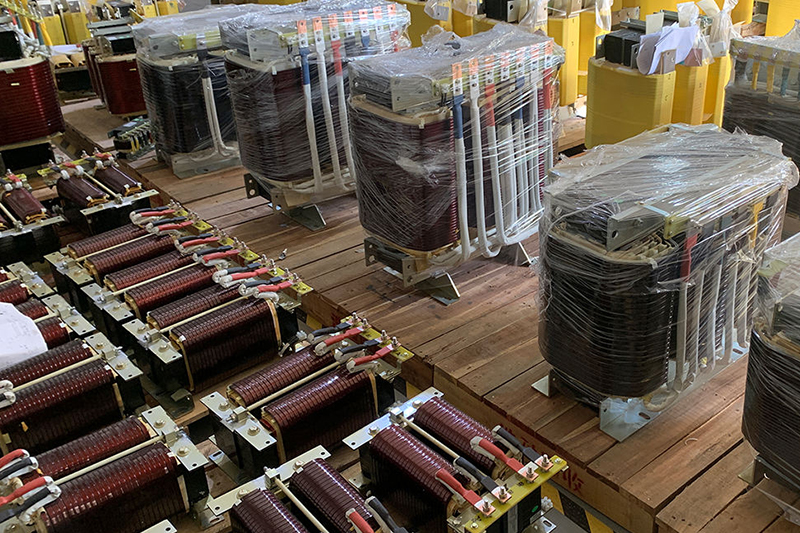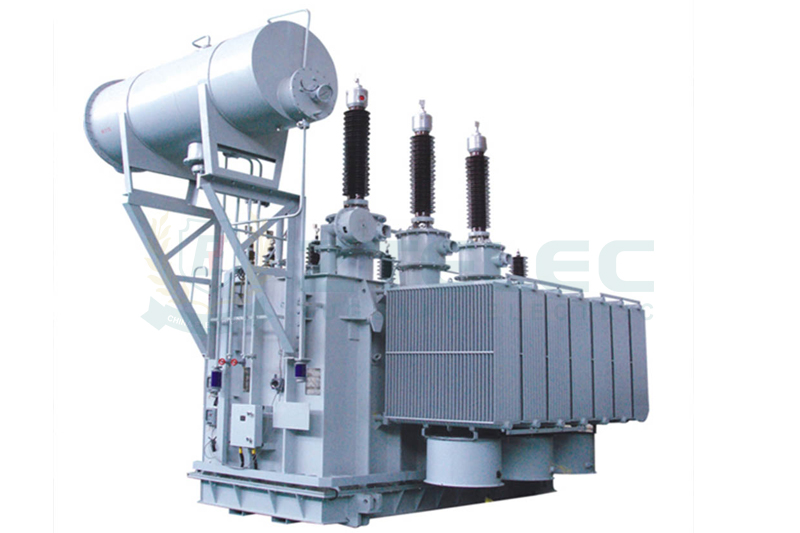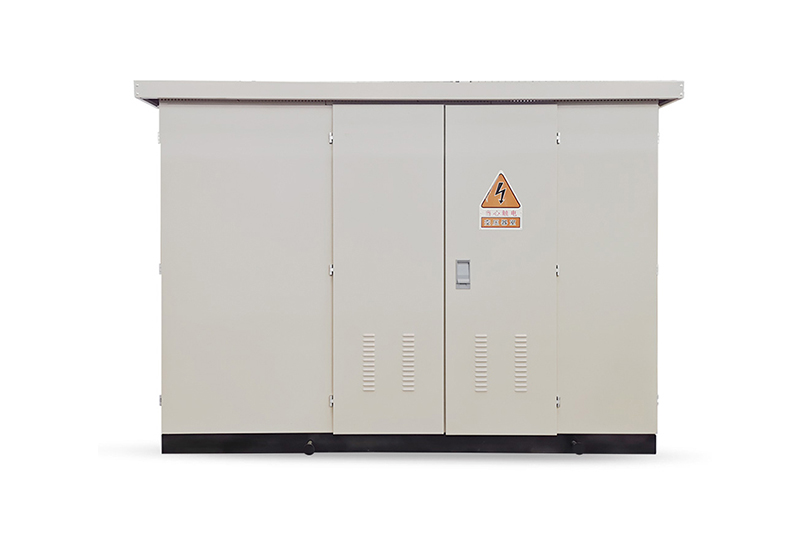How Three-Phase Isolated Dry-Type Transformers Eliminate Third Harmonics | Grid Purification Solutions
Time:2025-10-10 Auther:ZTelec-www.ztelectransformer.com
In modern power distribution networks, harmonics have become one of the major factors affecting power quality and equipment reliability. Among them, the third harmonic and its multiples (9th, 15th, etc.) are particularly harmful because they belong to zero-sequence components that can cause transformer overheating, neutral conductor overload, and voltage distortion. Although three-phase isolated dry-type transformers (typically using Δ-Y connections) are not active harmonic filters, they play an essential role in blocking and isolating third harmonics — helping to purify and stabilize the power grid.

1. Mechanism of Blocking Third Harmonics in Three-Phase Isolated Transformers
Blocking the Zero-Sequence Path
In a three-phase AC system, third harmonics and their integer multiples are zero-sequence harmonics, meaning their current amplitude and phase are identical in all three phases. To block these harmonics, transformer winding configuration plays a critical role. The most effective setup is the Δ-Y (delta-star) connection, where the delta winding provides a closed path for internal circulation of harmonic currents.
Delta (Δ) Winding Function: When third harmonic currents are generated on the secondary or primary side, they circulate within the closed delta loop. This prevents the third harmonic currents from propagating into the other side of the transformer, effectively isolating the harmonic source.
Star (Y) Winding Function: The Y-side of the transformer is often grounded through its neutral point. Although zero-sequence currents theoretically return through this point, the delta connection on the opposite side blocks this path, ensuring the third harmonic is confined within the transformer loop.
Result: A Δ-Y connected isolation transformer provides dual protection — it prevents third harmonic currents on the load side from contaminating the grid, and simultaneously shields sensitive loads from upstream harmonic interference.
Electrical Isolation Effect
Three-phase isolated dry-type transformers provide complete galvanic isolation between the primary and secondary windings. Energy transfer occurs only through magnetic coupling, breaking any direct electrical connection. This structural feature eliminates potential ground loops and prevents harmonic currents from flowing through grounding systems, effectively reducing electromagnetic interference and enhancing grid purity.
Transformer Intrinsic Characteristics
Due to their inherent short-circuit impedance, transformers offer partial suppression of high-frequency harmonic currents, including third harmonics. However, this effect is limited and can result in additional heat losses. The internal circulation of third harmonic currents in the delta winding increases copper and eddy current losses, potentially leading to transformer overheating and reduced load capacity if not properly managed.

2. Comprehensive Grid Purification Solutions
While isolation transformers provide essential harmonic blocking and isolation, they alone cannot completely eliminate harmonic distortion. To achieve optimal power quality improvement, a systematic approach combining filtering and source modification is necessary. The following are the most effective grid purification solutions:
Passive Filtering Solution
The core device in passive filtering systems is the zero-sequence harmonic filter, designed to target third harmonic suppression. This filter typically consists of inductors (reactors) and capacitors connected in a resonant circuit to form a low-impedance path for specific harmonic frequencies such as 150 Hz (the third harmonic of 50 Hz systems).
Working Principle: Third harmonic currents preferentially flow through the passive filter instead of entering the transformer or upstream grid, significantly reducing distortion levels.
Advantages: Simple structure, low cost, stable performance, and minimal maintenance requirements.
Limitations: Passive filters are tuned for specific frequencies and may lose efficiency if harmonic conditions vary or if new harmonic orders appear in the system.
Active Filtering Solution
The active power filter (APF) represents the most advanced and flexible method for harmonic mitigation in modern grids. It actively monitors the current waveform and compensates for multiple harmonic frequencies simultaneously.
Working Principle: Using power electronics such as IGBTs, the APF detects harmonic components (typically from 2nd to 50th order) in real time and generates a counter-current of equal amplitude and opposite phase. This compensating current cancels out the harmonics present in the system.
Advantages: High filtering accuracy, real-time dynamic compensation, improved power factor through reactive power correction, and no risk of resonance with the power system.
Limitations: Higher initial investment cost compared to passive filters, but long-term savings from improved efficiency and reduced equipment wear justify the expense. APFs are typically installed in parallel with the harmonic-producing loads on the same busbar.
Harmonic Source Optimization
Addressing harmonics at their origin is the most fundamental and sustainable solution. This involves using low-harmonic equipment or modifying existing converter systems.
Use of 12-Pulse or 24-Pulse Rectifiers: A phase-shifting transformer can adjust the input voltage phase angle for rectifiers. A 12-pulse configuration cancels out 5th and 7th harmonics, while 24-pulse rectification further cancels 11th and 13th harmonics. Although these methods have limited impact on third harmonics, they significantly reduce overall harmonic distortion in large drive systems.
Low-Harmonic Equipment Selection: Opt for inverters with built-in DC reactors or active front-end technology, and power supplies with Power Factor Correction (PFC) circuits. Such design improvements minimize harmonic generation at the source, reducing the need for downstream mitigation devices.
Three-phase isolated dry-type transformers play a vital role in improving power quality by blocking zero-sequence paths and isolating third harmonic currents between the grid and load. However, they are not a complete solution for eliminating harmonics. A comprehensive harmonic management strategy — combining isolation transformers with passive filters, active filters, and harmonic source optimization — ensures stable, efficient, and safe operation of modern electrical systems.
In conclusion, while isolation transformers provide the foundation for grid purification, achieving clean power and long-term equipment protection requires a holistic approach tailored to system load types, harmonic levels, and economic considerations. By integrating these technologies, power systems can achieve lower losses, reduced interference, and enhanced reliability — key goals of modern smart grid design.




